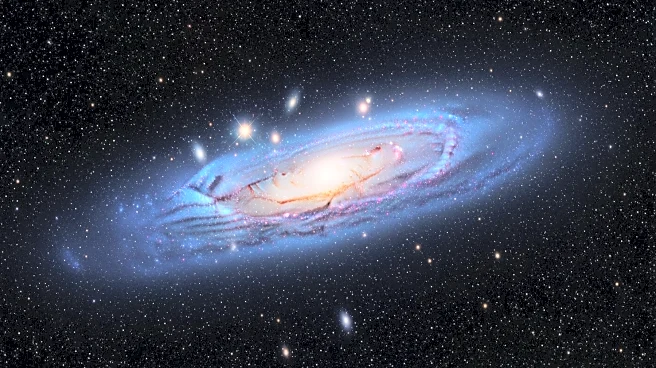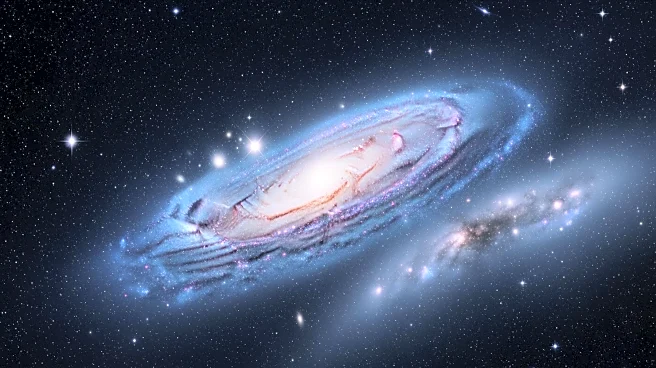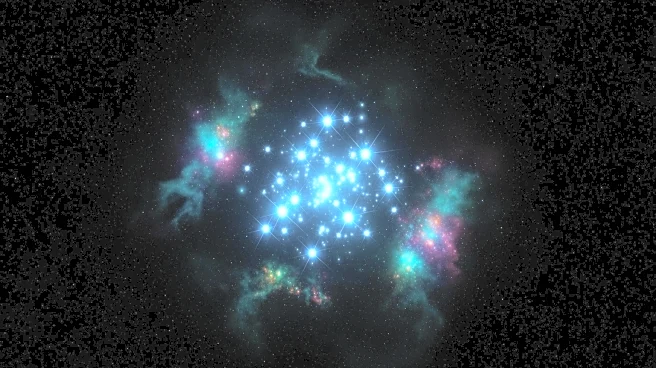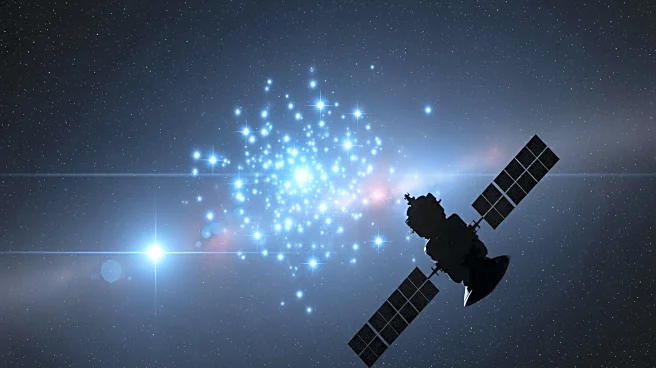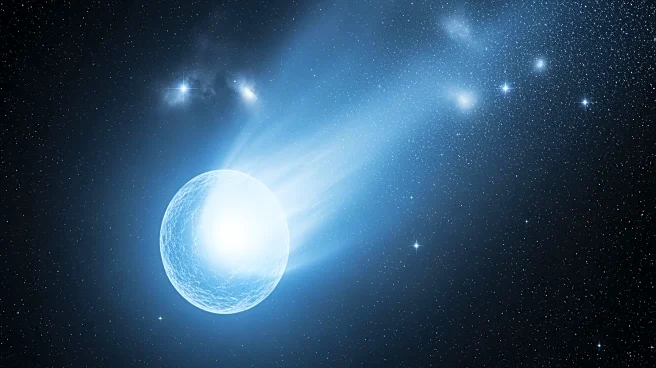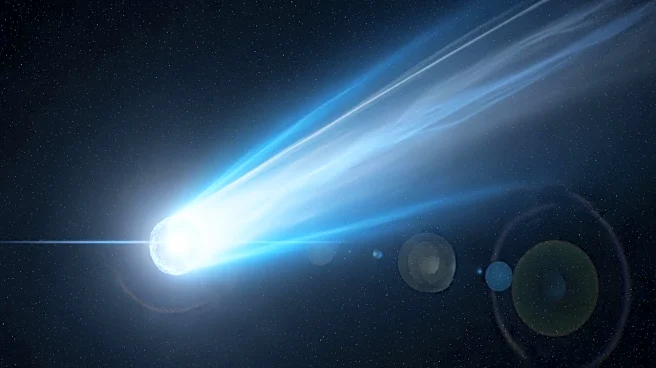What's Happening?
The NASA/ESA Hubble Space Telescope has captured a stunning image of the spiral galaxy NGC 4535, located about 50 million light-years away in the constellation Virgo. Known as the 'Lost Galaxy' due to
its faint appearance through small telescopes, NGC 4535 is revealed in detail by Hubble's powerful capabilities. The image showcases the galaxy's spiral arms and central bar of stars, along with young star clusters surrounded by glowing-pink H II regions. These regions indicate the presence of young, hot, and massive stars that emit high-energy radiation, contributing to the galaxy's dynamic environment.
Why It's Important?
The Hubble Space Telescope's observations of NGC 4535 provide valuable insights into the processes of star formation and the structure of spiral galaxies. By cataloging H II regions and young star clusters, astronomers can better understand the lifecycle of stars and the conditions that lead to their formation. This research contributes to broader efforts to map the universe and unravel the mysteries of galaxy evolution. The detailed imagery captured by Hubble enhances our knowledge of cosmic phenomena and underscores the importance of space telescopes in advancing astronomical research.
What's Next?
The ongoing study of NGC 4535 and other galaxies will continue to inform our understanding of star formation and galactic dynamics. Researchers may use the data collected by Hubble to refine models of galaxy evolution and explore the connections between young stars and cold gas. Future observations by Hubble and other telescopes will likely focus on identifying additional star-forming regions and analyzing their properties. The continued exploration of the 'Lost Galaxy' and similar celestial bodies will contribute to the broader scientific endeavor to map the universe and uncover its secrets.
